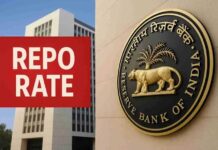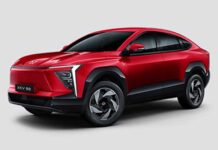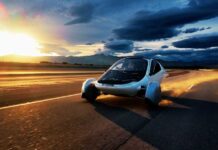
India’s automotive industry is facing potential production slowdowns and delays in electric vehicle (EV) launches due to China’s recent export restrictions on rare earth magnets—materials India relies on for over 80% of its supply. Effective April 2025, the new Chinese policy mandates export licenses and comprehensive end-use disclosures, resulting in a clearance timeline of at least 45 days. By the end of May 2025, no shipments to India had been approved.
The restrictions cover seven rare earth elements and finished magnets, with added scrutiny to prevent use in defense applications or re-export to the United States. This tightening of export protocols is causing severe delays, adding to the backlog and straining global supply chains, according to CRISIL.
In the previous fiscal year, India sourced over 80% of its roughly 540 tonnes of magnet imports from China. However, by the end of May 2025, despite nearly 30 import requests from Indian companies being cleared by the Indian government, none had been approved by Chinese authorities—resulting in zero shipments reaching India.
This supply disruption is impacting the production of permanent magnet synchronous motors, which are critical to electric vehicles due to their high torque, energy efficiency, and compact design. Hybrid vehicles also rely on these magnets for efficient propulsion systems. In internal combustion engine (ICE) vehicles, rare earth magnets are mainly used in electric power steering and other motorized components.
Anuj Sethi, Senior Director at CRISIL Ratings, noted, “The supply crunch comes at a critical time when the auto industry is gearing up for aggressive EV launches. Over a dozen new electric models—most based on permanent magnet synchronous motor (PMSM) platforms—are slated for rollout.” While automakers currently hold 4–6 weeks of inventory, he warned that extended delays could begin impacting vehicle production, with potential deferrals or rescheduling of EV models starting as early as July 2025. If the bottleneck continues, it could also affect production of two-wheelers and internal combustion engine (ICE) passenger vehicles.
The automotive sector expects domestic passenger vehicle sales to grow by 2–4% in FY2026, with electric passenger vehicles projected to surge by 35–40% from a low base. Electric two-wheelers are forecasted to grow around 27%, significantly outpacing the overall two-wheeler segment’s growth of 8–10%. However, ongoing supply disruptions could dampen this momentum, particularly in the fast-growing EV segment.
The current shortage contrasts with the pandemic period, when rare earth magnet supplies remained stable unlike semiconductors, leading companies to maintain just-in-time inventory practices without building strategic reserves. The rare earth magnet supply chain differs significantly from semiconductors, with over 90 percent of processing concentrated in China compared to the globally diversified semiconductor supply base.
Poonam Upadhyay, Director at CRISIL Ratings, stated, “The shortage of rare earth magnets is compelling automakers to revisit their supply-chain strategies. Although these magnets account for less than 5% of a vehicle’s total cost, they are vital for EV motors and electric steering systems.” Automakers are actively seeking alternative suppliers from countries like Vietnam, Indonesia, Japan, Australia, and the U.S., while also working to optimise current inventories. Given their critical role in both EVs and internal combustion engine (ICE) vehicles, a prolonged supply crunch could significantly disrupt production of passenger vehicles (PVs) and two-wheelers (2Ws). In a tight supply scenario, manufacturers may even prioritise ICE vehicles—which require fewer magnets—potentially hindering EV growth.
In response, both the government and the automotive industry are adopting a dual-track strategy. Short-term actions include building strategic inventories, tapping alternative global suppliers, and scaling up domestic assembly through the Production Linked Incentive (PLI) schemes. Long-term plans focus on reducing import reliance by accelerating rare earth exploration, developing indigenous manufacturing capabilities, and investing in recycling infrastructure.
Stakeholders across the sector are aligning efforts to diversify supply sources in line with evolving policy measures. However, the speed at which China processes export approvals for rare earth magnets remains the key factor influencing the availability of these critical components for India’s automotive industry.








